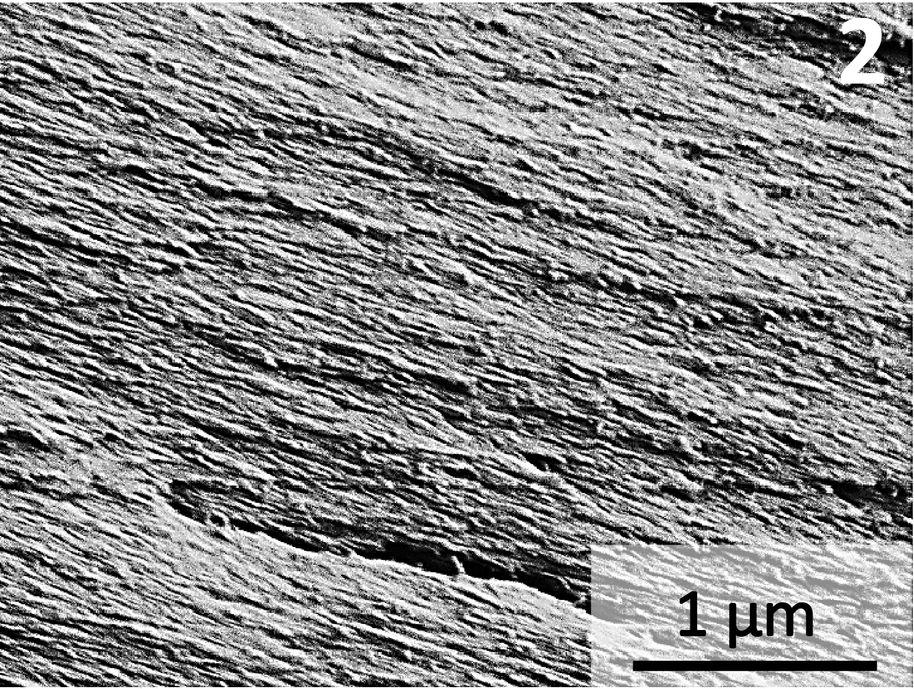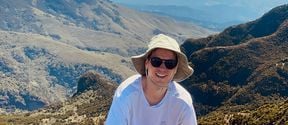The combination of plant-based particles and water forms an 'eco' super-glue

In a study published in Advanced Materials, researchers at Aalto University, the University of Tokyo, Sichuan University, and the University of British Columbia have demonstrated that plant-derived cellulose nanocrystals (CNCs) can form an adhesive that fully integrates the concepts of sustainability, performance, and cost which are generally extremely challenging to achieve simultaneously.
Unlike Superglue, the new eco glue develops its full strength in a preferred direction, similar to 'Peel and Stick' adhesives. When trying to separate the glued components along the principal plane of the bond, the strength is more than 70 times higher when compared to the direction perpendicular to that plane. All of this means that just a few drops (less than 2 mg per 0.0001-meter square) of the 'eco' glue has enough strength to hold up to 90kg weight, but can still be easily removed by the touch of a finger, as needed. As Dr Blaise Tardy from the Aalto Department of Bioproducts and Biosystems puts it, ‘The ability to hold this amount of weight with just a few drops is huge, especially from a natural plant-based solution’.
These kind of properties are useful in protecting fragile components in machines that can undergo sudden physical shock such as high-value components in microelectronics, to increase the reusability of valuable structural and decorative elements, in new solutions for packaging applications, and – in general – for the development of greener adhesive solutions.

Producing a comparable product to a market leader at low cost and with new properties
Furthermore, compared to the current approach of making high-strength glues that can involve complex and expensive routes, the team has demonstrated that their solution is just taking biobased particles sources from plants (with a comparatively negligible cost) and just adding water. Since curing time is associated with evaporation of the water phase (~2 hours, currently), it can be controlled, for instance, with heat.
Aalto Professor Orlando Rojas says, ‘Reaching a deep understanding on how the cellulose nanoparticles, mixed with water, to form such an outstanding adhesive is a result of the work between myself, Dr Tardy, Luiz Greca, Professor Hirotaka Ejima, Dr Joseph J. Richardson and Professor Junling Guo and it highlights the fantastic collaboration and integration of knowledge towards the development of an extremely appealing, low-cost and safe application’.
Dr Blaise TardyGood, green packaging with bad glue still renders the packaging bad
Moreover, the prospects for worldwide utilisation (in a 40B€ industry) is quite attractive given the ever-increasing production of cellulose nanocrystals seen across the globe, as supported by incentives in the framework of the circular bioeconomy.
Dr Tardy adds, ‘The truly exciting aspect of this is that although our new adhesive can be sourced directly from residual biomass, such as that from the agro-industry or recycled paper; it outperforms currently available commercial synthetic products by a great many measures’.
Link to the paper:
Exploiting Supramolecular Interactions from Polymeric Colloids for Strong Anisotropic Adhesion between Solid Surfaces – Advanced Materials
(https://onlinelibrary.wiley.com/doi/full/10.1002/adma.201906886)
Professor Orlando Rojas
[email protected]
+358505124227
Dr Blaise Tardy
[email protected]
Luiz Greca
[email protected]
+358503841761
- Published:
- Updated:
Read more news

Get to know us: Assistant Professor Ville Miikkulainen
Miikkulainen most recently worked as University Lecturer at Aalto University.
“We consider our students as active agents of transformation” Get to know the teachers behind the Sustainable Cities and Societies summer course
Explore why the course Susiatiabble Cities and Societies by Aalto University Summer School is one of the most critical topics right now.
Alum Anton Jantunen 'In my role, analytical skills, a comprehensive understanding of complex concepts, and the ability to see connections are especially useful.'
Anton Jantunen's journey led him from major consulting firms and startups to working in Nairobi at the UN Sanitation and Hygiene Fund, which aims to improve access to safe sanitation, hygiene, and menstrual health products and services. Jantunen works with innovative financing models for the fund.